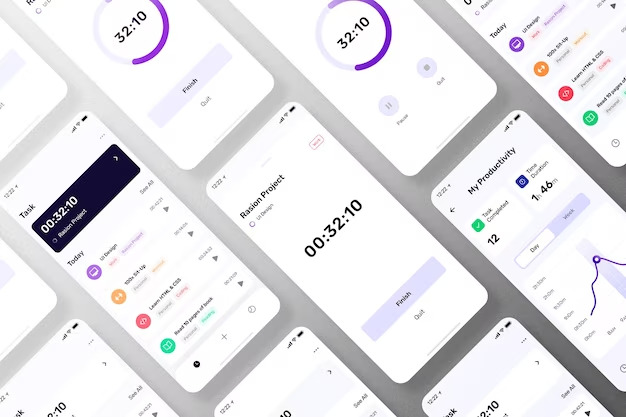On-Demand Services refer to a category of mobile applications that serve as intermediaries connecting buyers with service providers. When a consumer requires a particular service, these applications facilitate the connection with the relevant service provider. In return, On-Demand mobile apps typically charge a fee for each service order placed.
Consider a scenario where you return home after a demanding day at work, craving a satisfying meal but lacking the energy to cook. This is where On-Demand food delivery apps come into play. Through these apps, you can conveniently order food, ensuring a seamless and hassle-free dining experience.
Navigating the On-Demand Services App Workflow:
- Service Provider Registration:
- The service provider creates an account, showcasing their activities, skills, and expertise within the app.
- Consumer Service Request:
- A consumer initiates a service request, providing detailed information about the specific service they are seeking.
- Communication Initiation:
- The service provider responds to the consumer’s request, and communication commences through the in-app messenger, facilitating seamless interaction.
- Secure Payment Process:
- Upon agreement, the consumer proceeds to pay for the services through a secure payment gateway integrated into the app.
- Review and Rating System:
- After the completion of the service, the consumer has the option to share their feedback by leaving a review and assigning a rating to the service provider. This feature contributes to transparency and assists future consumers in making informed decisions.
In essence, On-Demand Services Apps streamline the connection between those seeking services and those offering them, providing a user-friendly platform for efficient transactions and fostering a collaborative community of service providers and consumers.
Exploring Categories of On-Demand Service Apps
The surge in mobile technology and the growth of the gig economy have propelled the popularity of on-demand services. These apps span various types, catering to diverse needs across industries. Presently, three primary categories define the landscape of On-Demand Service Apps:
1. Business to Customer (B2C):
- This is the most prevalent category, where businesses directly sell products or services to clients. Notable examples include DoorDash, Walmart, Amazon, Uber Eats, and Netflix.
2. Business to Business (B2B):
- In the B2B category, organizations establish connections with other businesses to enhance profitability. Examples of B2B on-demand service apps include Catalant, Eventio, and Cargomatic.
3. Customer-to-Customer (C2C):
- C2C mobile apps bring together individuals offering services to others. Popular instances of C2C apps encompass Offerup, OLX, Uber, and Airbnb.
Insights into the On-Demand Services Vertical:
The on-demand economy continues its expansion, presenting compelling statistics to affirm the significance of this business vertical. As on-demand service apps gain increasing traction, the landscape of opportunities for on-demand business ideas expands boundlessly. Seeking evidence? Look no further.
According to projections from Statista, mobile apps are poised to generate approximately $935 billion by 2023, more than doubling the $461 billion generated in 2019. This staggering growth underscores the undeniable momentum and potential within the on-demand services sector.
Estimating the Costs of Developing an On-Demand Services App
Creating on-demand mobile apps is a intricate endeavor, demanding approximately 8 months of development time and an investment of $70,000 per mobile platform.
These on-demand apps consist of three core components:
- Consumer App:
- Development Time: 8 months
- Cost: $37,000
- Service Provider App:
- Development Time: 8 months
- Cost: $30,000
- Web Dashboard:
- Development Time: Not specified
- Cost: $24,000
The consumer app serves as the daily interface connecting users with service providers. For the service providers to efficiently deliver their services, they also require a dedicated app. Additionally, a web-based dashboard is essential, managing tasks such as order tracking and service provider fees.
The breakdown of costs is as follows:
- Consumer App: $37,000
- Service Provider App: $30,000
- Web Dashboard: $24,000
Understanding the complexities of these projects, this cost breakdown provides a comprehensive overview for those considering venturing into the development of on-demand service apps.
A Complete Guide App Development Cost for 2023

